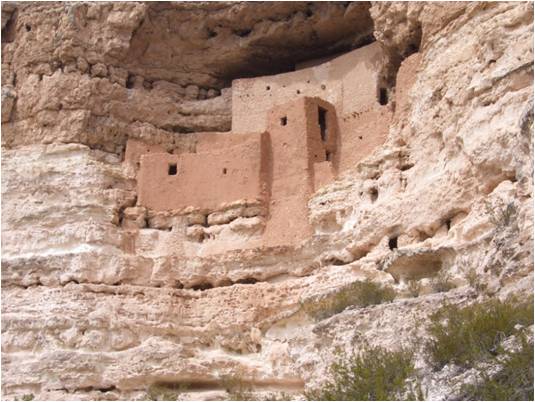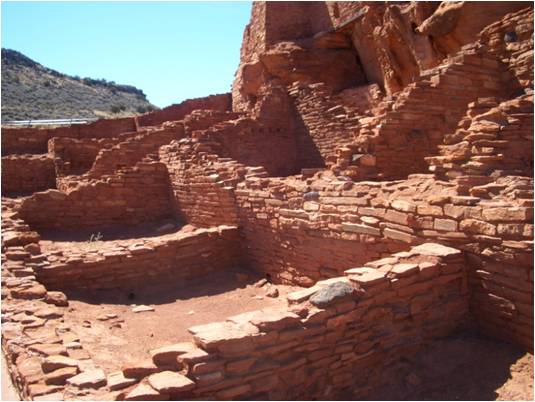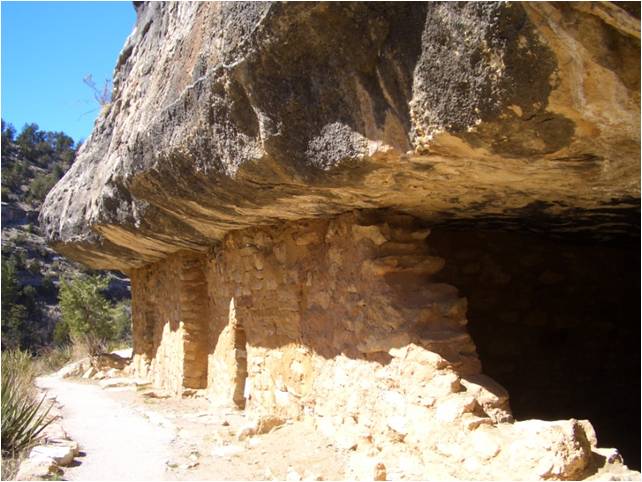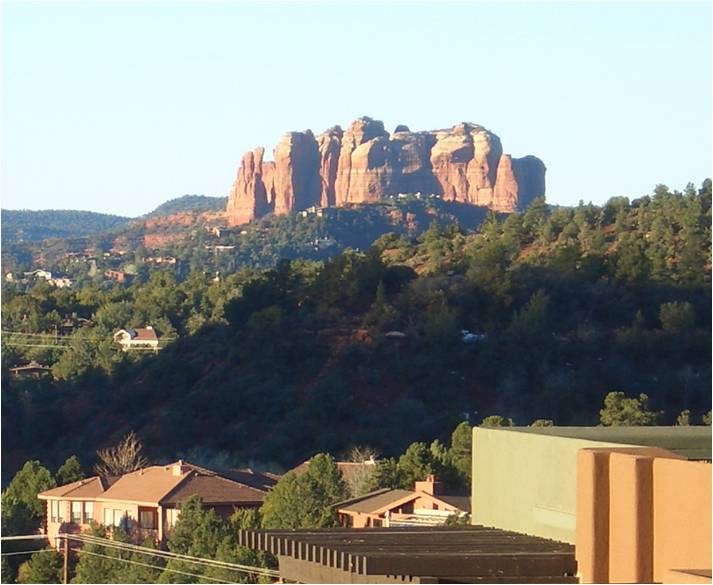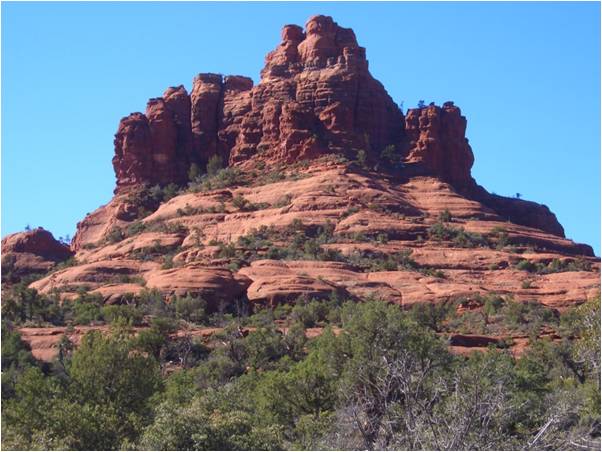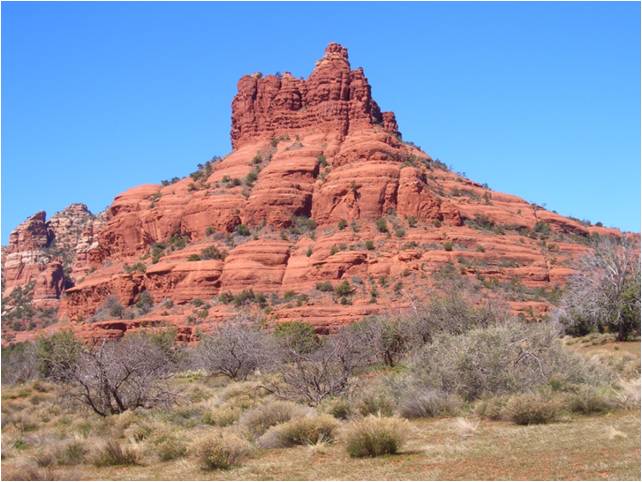Sedona in Arizona is famous for its red rock formations. These are massive outcroppings of sandstone and limestone which have been sculpted to interesting shapes through eons of weathering. The iron oxide in the rock gives it a brilliant rustic color, especially when the sun hits it at the perfect angle. If you enter Sedona via the southern route (i.e. in the direction from Phoenix), the approach is truly breathtaking. The rock formations have names like Courthouse, Bell, Cathedral, Snoopy, Coffeepot, etc. You can use your imagination to enjoy what nature has created. We visited Sedona in March of 2012. Although we had been here a few times before, we love to return when we can.
The landscape in Sedona is a heaven for hikers. There are over 100 marked trails of various lengths and difficulties. No matter which one you pick, you have a good chance of catching a changing view of equal beauty at every turn. If you are not the hiking type, you can take a jeep tour to the back country. If you are inclined to be more adventurous, you can go on a hot air balloon ride or a helicopter ride to capture the panorama from the air. Sedona is the place where many of the old western cowboy movies were filmed. I am sure we all saw a few of these when we were kids.
There is also a great deal of history around Sedona besides spectacular scenery. Because of its location near the Verde Valley, Sedona was a crossroad of trade among the native Indian tribes for centuries. Remnants of their settlements are scattered in the vicinity. There are some cliff dwellings preserved in Sedona itself, but a number of the larger, more elaborate, ruins are found within a short distance from town. All the ruins are designated as national monuments - Wupatki and Walnut Creek Canyon to the north, Montezuma Castle to the south, and Tuzigoot to the west. These places were occupied mainly by the prehistoric Sinaqua between the 1100's and 1400's. Sinaqua is a name given by the Spaniards meaning people without (sin) water (aqua). You can learn about their way of life and their architecture at these ruins. The timing of the Sinaqua moving into this part of Arizona might have something to do with the eruption of a nearby volcano, later named Sunset Crater Volcano, in about 1080. The ash from the eruption provided fertile soil for agriculture. After about 300 years of living in the community, the Sinaqua left the area for unknown reasons and disappeared into the wild. The now dormant volcano still remains a sacred site for the native Indians.
If you are interested in learning more about the history, migration, culture and arts of all the Indian tribes in Arizona, I suggest that you visit three museums: (1) Museum of Northern Arizona in Flagstaff, (2) Heard Museum in Phoenix, and (3) Arizona State Museum in Tucson. We spent hours in each of the museums reading as much as we could from the exhibits about the Hopi, Navajo, Apache, Hohokam, O’odham, Yavapei, Hulapei, and others. I like to combine travel with education, and there is no better place to accomplish both than in a museum.
I don't normally write about food in my travelogue, but I will make an exception this time. If you are game for something out of the ordinary, there is a restaurant in Sedona called the Cowboy Club where you can order rattle snake and fried cactus as appetizers. Margot and I both love southwest cuisine. On the recommendation of the concierge, we went to the Eloté cafe. The food was simply marvelous and the price was quite reasonable. The only problem was that you have to start lining up at 4:30 in order to get the first seating at 5 (no reservation taken). After that, the wait for a table is more than an hour. If you happen to be in Sedona, I urge you to try this place despite the wait. It is well worth your time. --- By Clement Ip
